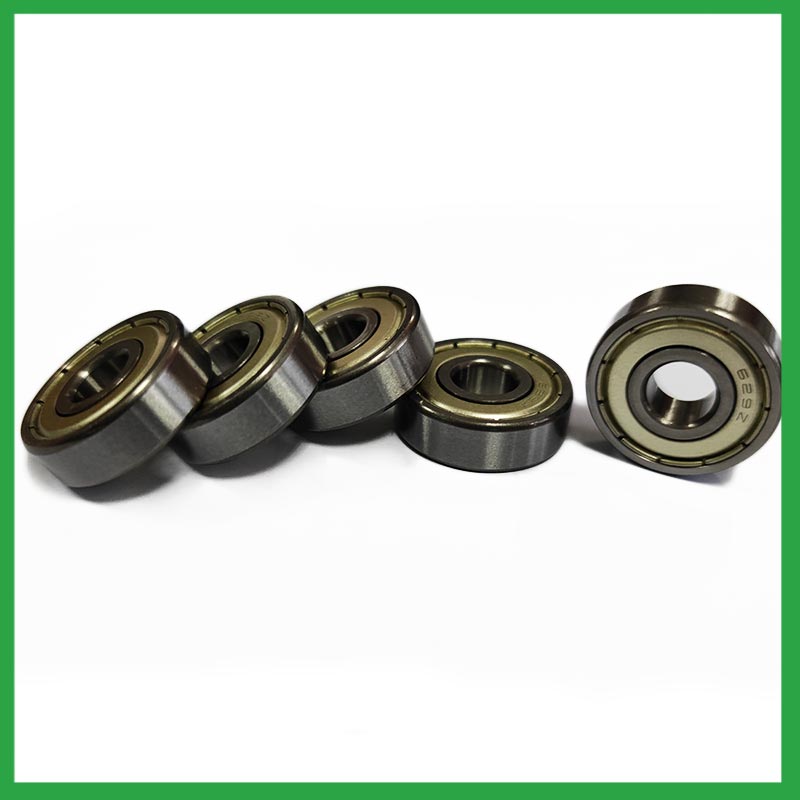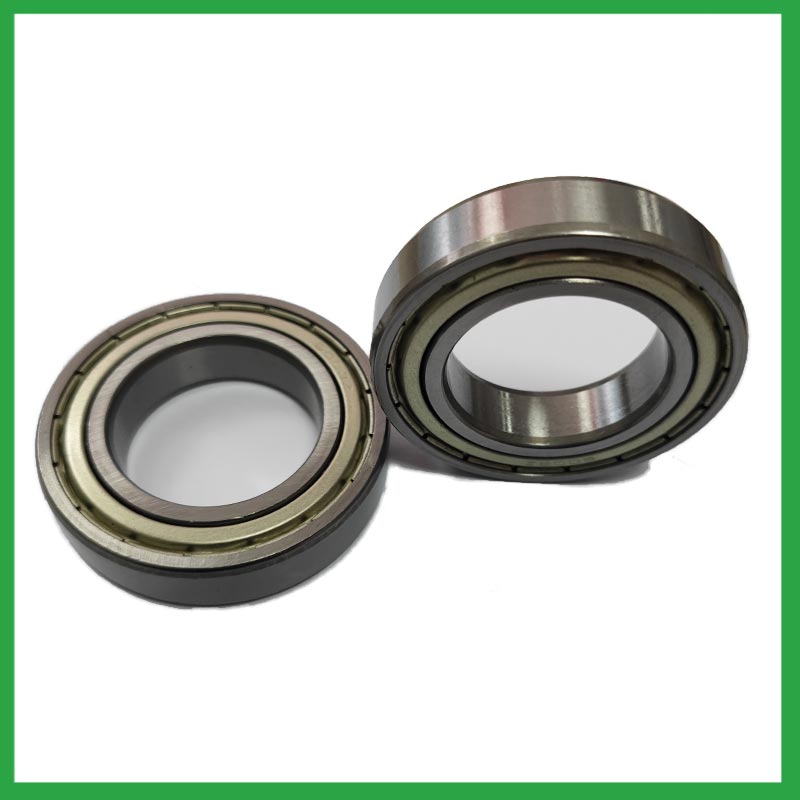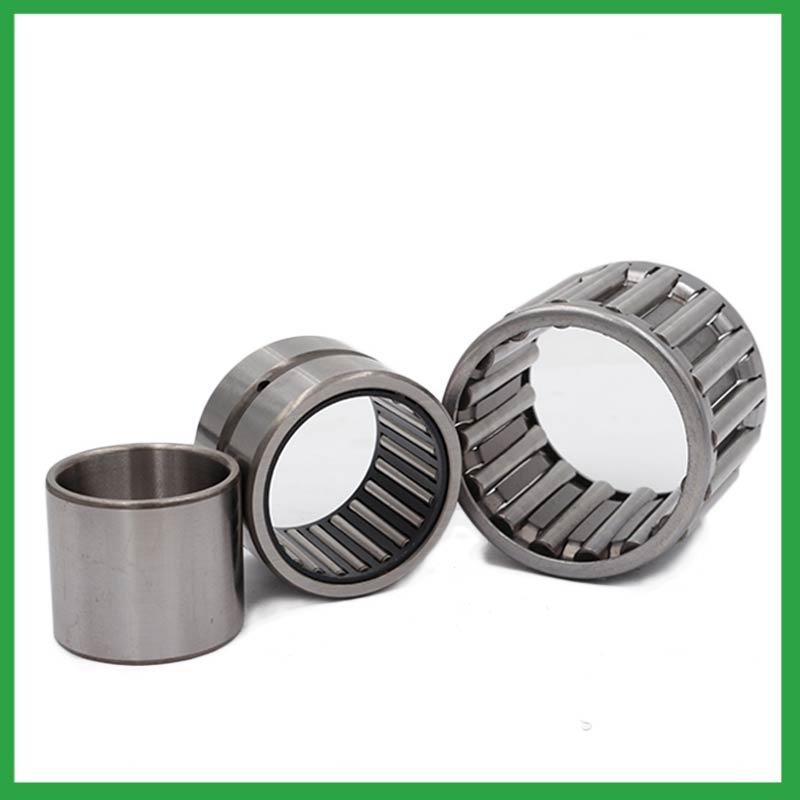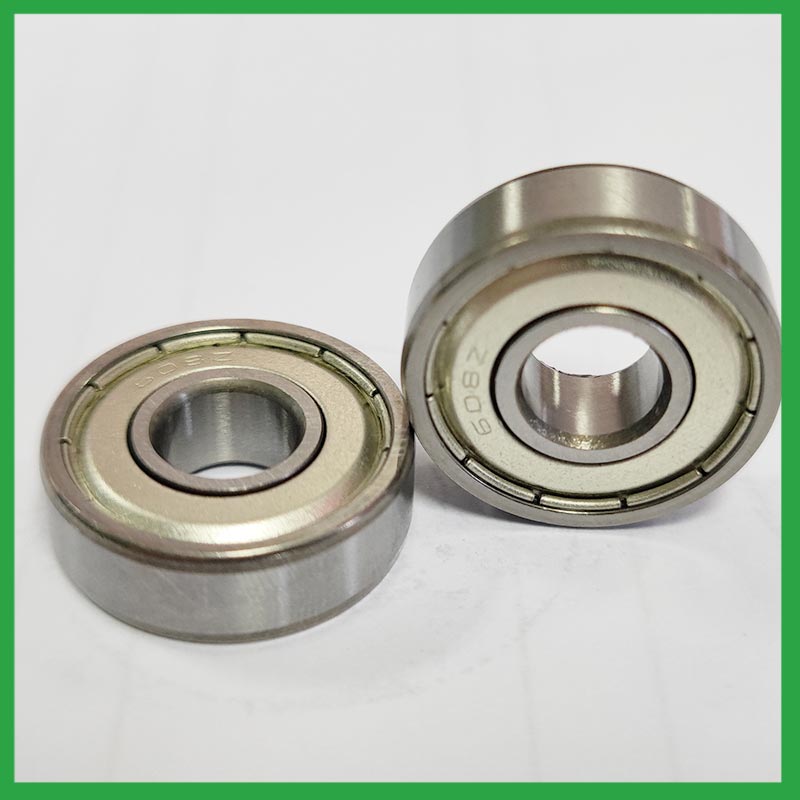PRODUCTS
CONTACT US
Ningbo Nide International Co., Ltd.
一一
· Contact person:Jack Zeng
· Mob/Whatspp/WeChat:0086-13738869026
· Email:emarketing@nide-group.com;marketing4@nide-group.com
· Add:No. 169, Wohushan Road, Daqi Subdistrict, Beilun District, Ningbo, China

Nide team could manufacture ball bearing as per customer’s drawing and samples.
If customer only has samples, we could also design drawing fo r our customer.
We also provide customized service.
Our ball bearing is widely applied the different industrials.
Ningbo Haishu Nide International is a professional manufacturer engaged in bearing research and sales. The factory covers an area of over 9000 square meters and has over 100 employees. The company has modern production equipment and advanced testing instruments. We produce deep groove ball bearings, spherical roller bearings, commutator,insulation paper,magnet,carbon brush,ball bearing,shaft, etc. The bearing accuracy is P0, P6, P5, P4 levels, widely used in servo motor,air condition motor,single and three phase induction motor,BLDC motor,compress motor,electric bicycle motor,water pump motor,washing machine motor. Passed ISO9001:2015 and CE status.
We adopt first-class production equipment and a comprehensive testing system, and hire excellent technical personnel for operation and management. Our bearings are now very popular in the United States, Canada, Türkiye, Russia, Argentina Iraq,Zimbabwe,Somalia and other countries and regions.Nide wishes is to provide world wide customers with one-stop service for the motor manufacturing.

| Parameter | Information |
| Product Name | ball bearing socket |
| Brand Name | Nide |
| Place of Origin | China |
| Type | Ball |
| Material | stainless steel, etc. |
| Sample | Avaible |
| Warranty | 3months-1year |
| Lubrication | Dry/ Oil |
| Application | aviation engines, etc. |
| Port | Ningbo/Shanghai |
| Size(mm) | customize |
| Export Country | Argentina,Brazil,South Korea,Lebanon,Antarctica,Denmark,Finland...etc |
| Export region | Africa,America,Oceania... |
| Certification | ISO 9001 Certification,CE-insulation paper inserting machine,ISO9001:2015 certificate,etc |
| Precision Rating | as per customer's requirement |
| Feature | Simple structure,Low Noise...etc |
| Packaging Details | Suitable for sea transportation |
| Color | Silver gray+customized |
| Seals Type | Rubber seals |
| Service | Prompt Delivery |
| Supply Ability | 100000-500000 Piece/Pieces per Month |
| Lead time (days) | 15-20 (To be negotiated) |
Please note: The above table data is for reference only. For specific information, please contact us.
ball bearing socket have the advantages of high efficiency,durability,low friction coefficient,lightweight, and high load, and are used in main motion mechanisms and components, such as motors,tires,automotive drive components,resistors, different motion mechanisms and accessories of airplanes and motorcycles.
Before use, the model, size, and design of the ball bearing should be confirmed to ensure suitable application;
During installation, the installation load of the ball bearing should be minimized as much as possible to avoid unnecessary damage;
The bearing shaft and the bearing frame should be stable at the same time to avoid excessive tension.
Ball bearings have many advantages, making them highly competitive in the market.
Firstly, they are very durable and have good wear performance, making their service life longer than many other types of bearings.
Secondly, they are easy to install and can provide low friction performance in various applications.
Thirdly, they require a relatively low level of maintenance, making them cost-effective.
In addition, compared to many other types of bearings, their purchase cost is relatively low, making them an economical choice.




ball bearing socket---FAQs Guide
2.Are there ceramic ball bearing socket designed for specific applications requiring high-temperature or corrosion resistance?
3.How do ball bearing socket handle radial loads, axial loads, and combined loads, and what are their load-carrying capacities?
4.Where can ball bearing socket be used?
5.What is the load distribution within a ball bearing socket, and how does it vary between different bearing configurations?
6.About ball bearing socket,Will you check the products before shipment?
7.What is a ball bearing?
8.What are the advancements and innovations in ball bearing socket technology that have emerged in recent years?
9.What is the role of ball bearing socket in reducing friction and wear in automotive applications, such as wheel hubs and transmissions?
10.Are there miniature ball bearing socket designed for use in precision instruments and small-scale mechanisms?
1.Are there self-aligning ball bearing socket that accommodate misalignment and shaft deflection in rotating equipment?
These ball bearing socket are particularly suitable for applications where misalignment can arise from errors in mounting or shaft deflection. A variety of designs are available with cylindrical and taper bores, with seals and adapter sleeves and extended inner rings.
2.Are there ceramic ball bearing socket designed for specific applications requiring high-temperature or corrosion resistance?
Ceramic ball bearing socket are a special type of bearing made of ceramic materials, offering superior wear resistance, corrosion resistance, and high-temperature performance. They provide excellent performance in applications requiring high speeds, high temperatures, and resistance to corrosion.
3.How do ball bearing socket handle radial loads, axial loads, and combined loads, and what are their load-carrying capacities?
The type of bearing used also varies between these loads. While deep-groove ball bearing socket are better equipped to handle radial loads, thrust ball bearings are designed for axial loads. However, it's essential to note that most bearings, such as angular contact ball bearings, can handle both radial and axial loads.The Bearing Static Capacity, Co, is the maximum load that can safely be applied to a non-rotating bearing that will not cause subsequent bearing operation to be impaired. It is based on calculated contact stress at the center of the most heavily loaded rolling element where it contacts the Inner Race.

4.Where can ball bearing socket be used?
ball bearing socket are very versatile. They can be designed to withstand radial loads, axial loads and combined radial/axial loads at various operating speeds. These characteristics, combined with the relative cost and compactness of the design, give it universal appeal within the industry. Ball bearings are widely used in electric motors, gear reducers and pumps. Serving the automotive, home appliances, aerospace, oil and gas drilling, and mining sectors.
5.What is the load distribution within a ball bearing socket, and how does it vary between different bearing configurations?
The load distribution between the rolling elements and raceway is crucial in performance evaluation of rolling element bearings. Determine the load distribution by measuring the strain response at the bearing surface with a notched housing. Finite element analysis shows that the introduction of notches does not affect the load distribution. An experimental system was developed to investigate the load distribution in a cylindrical roller bearing. The experimental static load distribution agrees well with the theoretical calculation. The dynamic load at specific position of load zone reflects the manufacture difference among rollers and dynamic balance of distributing loads.
6.About ball bearing socket,Will you check the products before shipment?
Yes, We have a professional QC team. Products will be strictly inspection before shipment.

7.What is a ball bearing?
A ball bearing is a type of rolling-element bearing that uses balls to maintain the separation between the bearing races.
The purpose of a ball bearing is to reduce rotational friction and support radial and axial loads. It achieves this by using at least two races to contain the balls and transmit the loads through the balls. In most applications, one race is stationary and the other is attached to the rotating assembly (e.g., a hub or shaft). As one of the bearing races rotates it causes the balls to rotate as well. Because the balls are rolling they have a much lower coefficient of friction than if two flat surfaces were sliding against each other.
Ball bearings tend to have lower load capacity for their size than other kinds of rolling-element bearings due to the smaller contact area between the balls and races. However, they can tolerate some misalignment of the inner and outer races.
8.What are the advancements and innovations in ball bearing socket technology that have emerged in recent years?
Significant advancements have been made in ball bearing socket steels over the years. Modern, ultra-clean bearing steels contain fewer and smaller non-metallic particles, giving ball bearings greater resistance to contact fatigue.
9.What is the role of ball bearing socket in reducing friction and wear in automotive applications, such as wheel hubs and transmissions?
When a load is applied to a ball bearing, the ball bearing socket roll freely between the inner and outer rings. This rolling action significantly reduces friction compared to sliding contact, resulting in smoother rotation and reduced wear.

10.Are there miniature ball bearing socket designed for use in precision instruments and small-scale mechanisms?
Miniature bearings, despite their small size, play a significant role in various industries and applications. These compact powerhouses, typically measuring less than one inch in outer diameter, offer exceptional precision, durability, and reliability. Miniature bearings find extensive use in precision instruments and robotics.

